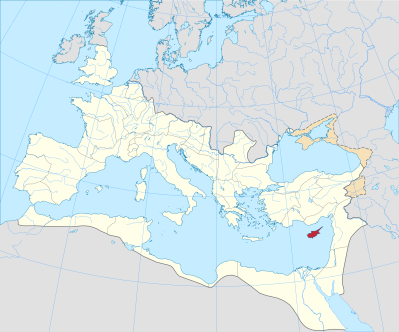One of the most incredible and peculiar diplomatic outcomes in Roman history was the partition of Cyprus between the Arab Caliphate and the Roman Empire. Taxes were split and the island was peacefully administered by Roman authorities. How did this work though?

“An unusual situation prevailed on Cyprus, which had twice been attacked by the Arabs in the mid-seventh century and partially depopulated. The agreement between Justinian II and Abd al-Malik created a unique regime for the island, that by and large, exempted it from broader conflict for almost three centuries. Specifically, Cyprus was demilitarized and its taxes were shared between the two sides.”

“This arrangement is traditionally called the ‘condominium,’ though sovereignty over Cyprus was not divided: it remained with Rome…
The Romans did not keep a large presence on the island, but ‘maintained a small staff on the island, mostly fiscal officials.’”

The deal had its complications though, Justinian II even took some of the citizens of Cyprus in resettled them in Roman territory. This was smart, as he could not take all the tax revenue of those people, but, also it naturally infuriated the Arabs. Eventually, the Cypriots returned to the island and the agreement for division of tax revenue was respected for a long time. The island would be eventually be fully under Roman control in the 10th century.
Source:
The New Roman Empire: A History of Byzantium by Anthony Kaldellis

